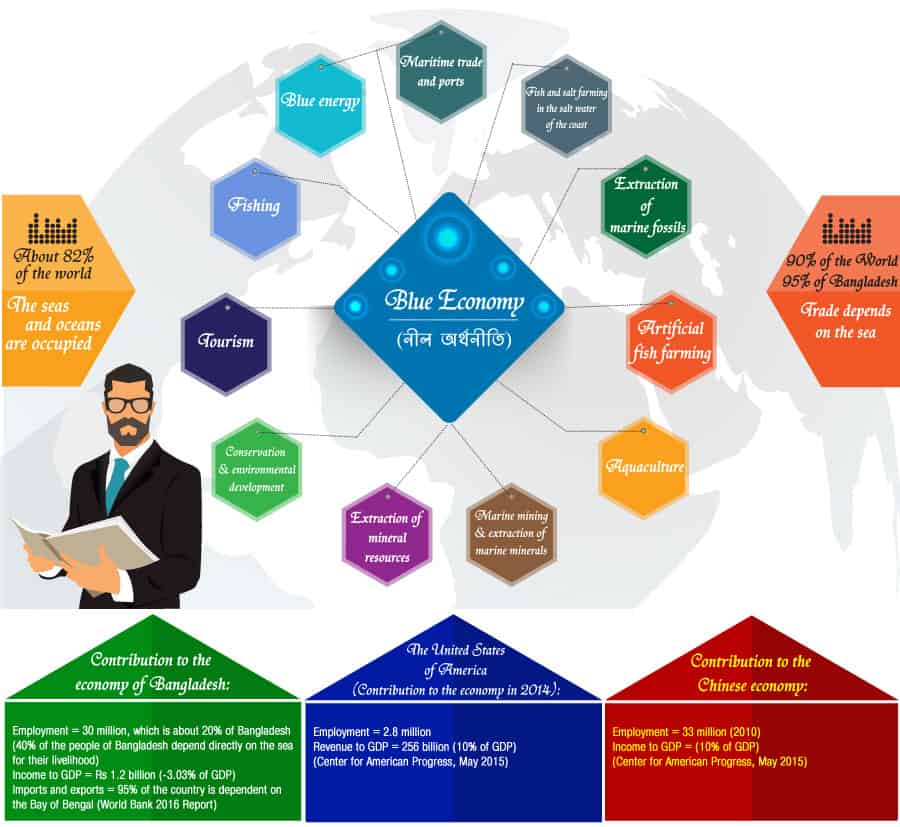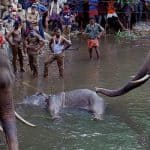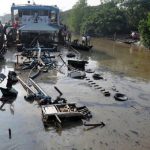The Blue Economy (নীল অর্থনীতি) and The Maritime Victory-Opened a door of Immeasurable potential Economic growth for Bangladesh

The sea, the ocean, and the blue saltwater – it seems all the resources of the earth are drowned in that water.
It is like the Thakur ma jhuli’s fairytale (the grandmother’s stories’ basket)– the land of monster, where the monsters have hidden all the resources of the world. In the blue salty waters of the sea, inside the Seawater, at the seafloor, even under the seafloor.
In blue saltwater, under the water, even more under the ocean floor, at the bottom of the sea, it means resources are created when the water is dry (salt). Water has living resources (Fishes), the resources are moving on it, such as traveling up to the water has resources (vessels, merchants, ports, etc.), in continuity water has resources (tourism, aquaculture), resources at the seafloor (mineral salts, pearls, corals, chemical elements and precious metals, etc.), resources under the seafloor (oil, gas, and minerals) – like magic water! Blue saltwater.
The blue economy (নীল অর্থনীতি) is the economy of sustainable use, extraction, and preservation of those resources.
For this reason, the blue economy (নীল অর্থনীতি) is the field of an infinitely promising economy that seems to be helping us to attain it.
It is a marine-based development of an economy that promotes human welfare and reduces environmental risk and ecological scarcity. The easiest meaning of this economy is the proficient use of seas and marine resources for sustainable economic development.
Gunter Pauli, a native of Belgium, designed the Blue Economy concept, which was recognized in the World Summit on the United Nations Sustainable Development Goals (SDG) in Rio de Janeiro, the capital of Brazil, in 2012 (The Earth summit, Rio + 20).
Sectors of the Blue Economy (নীল অর্থনীতি) are: –

1. Maritime transport and ports: –
Maritime trade, ports, and harbor facilities, marine conservation activities, amenity values, etc. Amenity value’s examples such as recreational activities, enjoyment, and mind fresh, permanently or temporarily accommodation for entertaining. And the local importance of a place or an event or concentration of travel.
2. Marine fisheries:
This includes recreational / subsistence, sport fishing, commercial, Mariculture, etc.
Mariculture and sport fishing:
Mariculture – Artificial fish culture by forming artificial ponds by net or tank where food organisms such as shrimp, finfish, shellfish, oyster cultivation for pearl, seaweed cultivation for food for humans or live stocks and for fuel or edible, etc. And Sport Fishing is recreational substance fishing.
3. Fish and salt cultivation in saltwater on the coast-
Shrimp and white fish culture in saltwater and salt cultivation.
4. Offshore petroleum:
Extraction of minerals, such as oil, gas, etc.
5. Conservation and environmental protection:
Sustainable use of marine resources. Conservation and reasonable use of resources without polluting / damaging marine environment and collecting in such a way that the resources are not wasted due to pollution and excessive collection.
For this reason, preventing maritime pollution, creating a sanctuary for marine fish, prohibited no fishing at country’s territorials water region (up to 12 nautical miles from seashore) and specific size to catching fish (below 9 inches), protecting maritime boundaries, guarding and coastal policing, protecting the sovereignty of the country and so on.
6. Tourism:
Beach tourism and hotel-motel and related merchandise, cruise ship, yachting, etc.
7. Marine fossil retrieval:
Collection of dead oysters, pearls, corals, etc.
8. Dredging and aggregates extraction of Marine Minerals:
Mineral sand collection, marine dredging work for vessel movement.
9. Blue energy:
Power generation by using marine tide, water streams, and oceanic water waves. Production of electricity by installing solar panels and windmills in the seashore and shallow, deep water and island areas.
10. Aquaculture:
The cultivation of artificial commercial marine fish, food and beauty enhancer products, or fish species.
Goals of the Economy:
- Economic diversification.
- High values job creation.
- Ensure food security.
- Proper management and protection of the marine environment.
Emerging sectors of Blue Economy (নীল অর্থনীতি):
- Blue Energy
- Aqua Culture
- Marine Based Tourism
- Marine Mineral Resources
- Blue Biotechnology
- Inland waterways
- Coastal belt Economic Activities
1. Blue Energy:
(a). Tidal Power Generation:
Power produces by the construction of Tidal Barrage across the sea channels or between the islands on the coast.
Below there are some pictures of tidal power projects in the world:

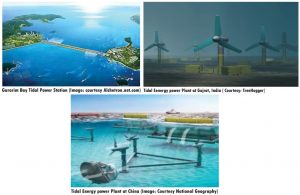
(b) Sea Wave Power Plant:
Power generation by using sea wave energy.
Below there are some pictures of Sea Wave Power Plant in the world:
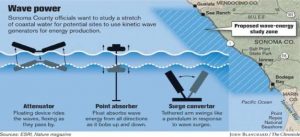

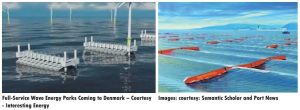
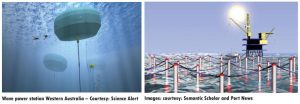
(C) Solar Power Plant and Wind Mills:
Production of energy by installing solar panels or using windmills on the seashore or in shallow, deep seas or Char areas.
Below there are some pictures of the Sea Wave Power Plant in the world.
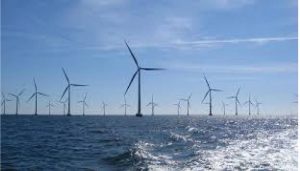

(d) Ocean thermal Power Plant:
Production of electricity by the use of the temperature difference of cooling water collecting from the deep ocean and warm water from the upper level of the sea at the Equatorial Region.
Below there are some pictures of Ocean thermal Power Generation station:

(e). Hydrocarbons:
Produce electricity from Hydrocarbons/fossil fuels
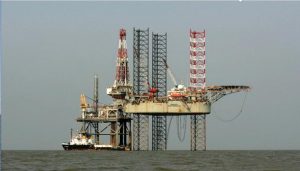
2. Aqua Culture:
- Food Security.
- Animal Feed.
(A). Mari Culture:
Mari Culture by Creating artificial ponds/tanks in the shallow, deep sea by using nets or in closed /open trenches and cultivating fish/oysters.
Below there are some pictures of Sea Aqua Culture and Mari Culture in the World:






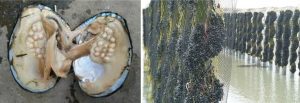
(B) Sea Wood or Sea Grass Farming:
Seagrass or seaweed is being used as a delicious and high protein-rich food worldwide. As well as edible oils, biochemical and herbal medicines, jet fuel, fertilizers, chemical products (such as methane, nitrogen, ethanol, etc.), green diesel, domestic fuel, and hundreds of products are producing from it. Various countries along the coast are cultivating blue carbon.
Below there are some pictures of Sea woods cultivation and products from sea woods:



Made of Sea Grass (Curtesy: kmart and Ballard Designs)



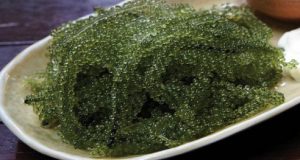

(C) Sea Cucumber Firming:
Extremely valuable sea product, being used as meats, as an alternative to animals or birds’ meats in the Fast Food Shops, Restaurants and also being used as a raw material of the life-saving medicine.
Below there are some pictures of Sea Cucumber Firming and fast food delicious items made of Sea Cucumber:

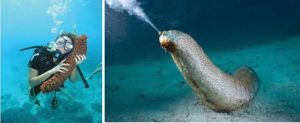
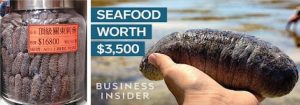

3. Marine Based Tourism:
- Sea Beach
- Cruise Ship
- Explore and preservation of marine history and heritage
- Passenger Ferry infrastructure and services
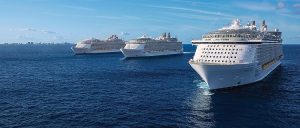
4. Marine Mineral Resources:
- Shallow water Mining.
- Deep-sea mining.
For mineral sand collection.


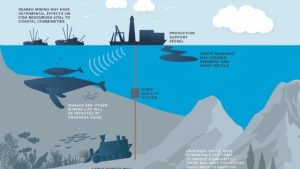
Copper Minerals (Image Courtesy: Jonathan Zander (Digon3)
5. Blue Biotechnology:
Gene Sequencing Technology:
It is used in Chemistry and Medical, gene technology in agricultural laboratories





6. Inland waterways:
- Inland transport
- Inland Infrastructure
- Inland services
- Inland Real Estate
- Inland Navigation and Traffic Management
- Inland Marinas and tacking
7. Coastal belt Economic Activities:
- Saltwater Fish Culture
- Salt Cultivation
- Forestry and Afforestation around Seashore, Islands
- Ship manufacturing Industry
- Shipbreaking Industries
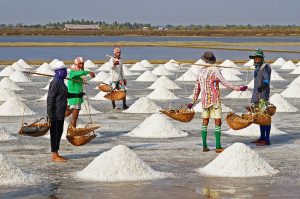

Therefore, now it’s not difficult to understand to us that the Blue Economy supports more or less all the UN Sustainable Development Goals (SDGs), especially SDG14: Life below water. Its directly supported the other UN SDGs it is:
- SDG1: No Poverty- Its income generated in different ways.
- SDG2: Zero Hunger – Due to income generated activities it’s and source of fisheries that help to remove hunger; SDG3: Health and Well-being Tourisms and income generation activities.
- SDG4: Quality Education – Achievement of SDG1, SDG2, SDG3, and other SDGs can drive to achieve this SDG.
- SDG5: Gender Equality – Achievement of SDG1, SDG2, SDG3, SDG4, and other SDGs can drive to achieve this SDG.
- SDG7: Affordable and Clean Energy – Blue Energy.
- SDG8: Decent Work and Economic Growth- due to income generation activities.
- SDG9: Industry, Innovation, and Infrastructure- Fisheyes, Aquaculture Agriculture, and Sea trade.
- SDG10: Reducing Inequality: Achievement of SDG1, SDG2, SDG3, SDG4, SDG5, and other SDGs can drive to achieve this SDG.
- SDG11: Sustainable Cities and Communities: Tourisms, Sea Port cities, and Sea-based Trades.
- SDG17: Life on Land: Aquaculture, Mariculture, Tourisms, Coastal; Agriculture, etc. all activities
- SDG18: Peace, Justice, and Strong Institutions – due to the development of human living status.
After the Blue Economy concept recognition at the World Summit on SDG (The Earth summit, Rio + 20), it was excepted by the Indian Ocean Regional Cooperation Association (Indian-Ocean Rim Association – IORA) in the ministerial meeting held at Perth, Australia on October 09, 2014. All have agreed to develop a business and economic model in creating employment, food security, poverty alleviation, and sustainable business around the Indian Ocean.
Since then, mutual equity and development policies are adopted among the member States of IORA in the field of
- fisheries and aquaculture,
- safety of seafood products and improvement of quality,
- seafood handling, processing, and storage of fisheries and aquaculture products,
- sustainable management and development of fisheries resources, fish trade; seaport and shipping; maritime connectivity,
- management and operations of the seaport,
- banking and artisanal fisheries,
- marine spatial planning,
- Cooperation and development of ocean forecasting/observatory,
- Cooperation in the field of blue carbon; and renewable energy production/generation.
The first meeting of the IORA’s Council of Ministers on Blue Economy was held in Mauritius in September 2015, another held in Jakarta, Indonesia’s capital, on May 2017 and the 19th meeting at Abu Dhabi on November 2019.
Before the 19th meeting, the Dhaka Conference (Dhaka IORA Conference – “Promoting Sustainable Blue Economy”) on Sustainable Blue Economy Development was held at Dhaka on September 03-04, 2019. This conference was inaugurated by the Honorable Prime Minister of Bangladesh Sheikh Hasina Wazed, daughter of the “Father of the Nation” “Bangabandhu Sheikh Mujibur Rahman.
For the Development of Blue economy IORA’s Secretariat emphasizes 6 issues. They are:
• Fisheries of Aquaculture.
• Renewable Ocean Energy or Blue energy.
• Seaports and Shipping communication.
• Offshore Hydrocarbons and seabed minerals.
• Marine Biotechnology, Research, and Development.
• Tourism
In Bangladesh, the Blue Economy came in the discussion after the dissolve of maritime boundary delimitation dispute with Myanmar and India in 2012. In the judgment of the International Court of the Hague, Netherland, in 2014, Bangladesh was given the exclusive right to explore, exploit, conserve and manage maritime resources over an area of 1,18,813 sq. Km in the Bay of Bengal.


Bangladesh receives an area of 1, 11,631 sq. Km and Myanmar receive an area of 1, 71,832 sq. km of the Bay of the Bengal by the judgment of the International Tribunal for Law of the Sea – ITLOS, Hamburg, Germany, on March 14, 2012.
Though the coast length of Myanmar (587km.) is greater than the coast length of Bangladesh (413 km.). Myanmar received proportionately more area than Bangladesh.

In a judgment issued by the Permanent Court of Arbitration –
PCA at Hague in the Netherlands, Bangladesh awarded 19,467 sq. Km of the 25,602 sq. Km where India gets 6,135 sq. Km. of the sea are of Bay of Bengal over a dispute between the two neighboring countries.



Under the blue waters of the Bay of Bengal, there lies a vast hidden resource. It needs to adopt a unique plan and policy to collect and make sustainable use, conservation, and preservation of it.
Currently, 95% of the country’s exports-imports are dependent on the Bay of Bengal. According to international law, the sovereign right of Bangladesh on the seashore extends up to 200 nautical miles (1 nautical mile = 1.5 miles), the Exclusive Economic Zone (EEZ). Besides, Bangladesh’s sovereign right on the seashore now extends up to 3354 nautical miles from the Chattagram seaport.
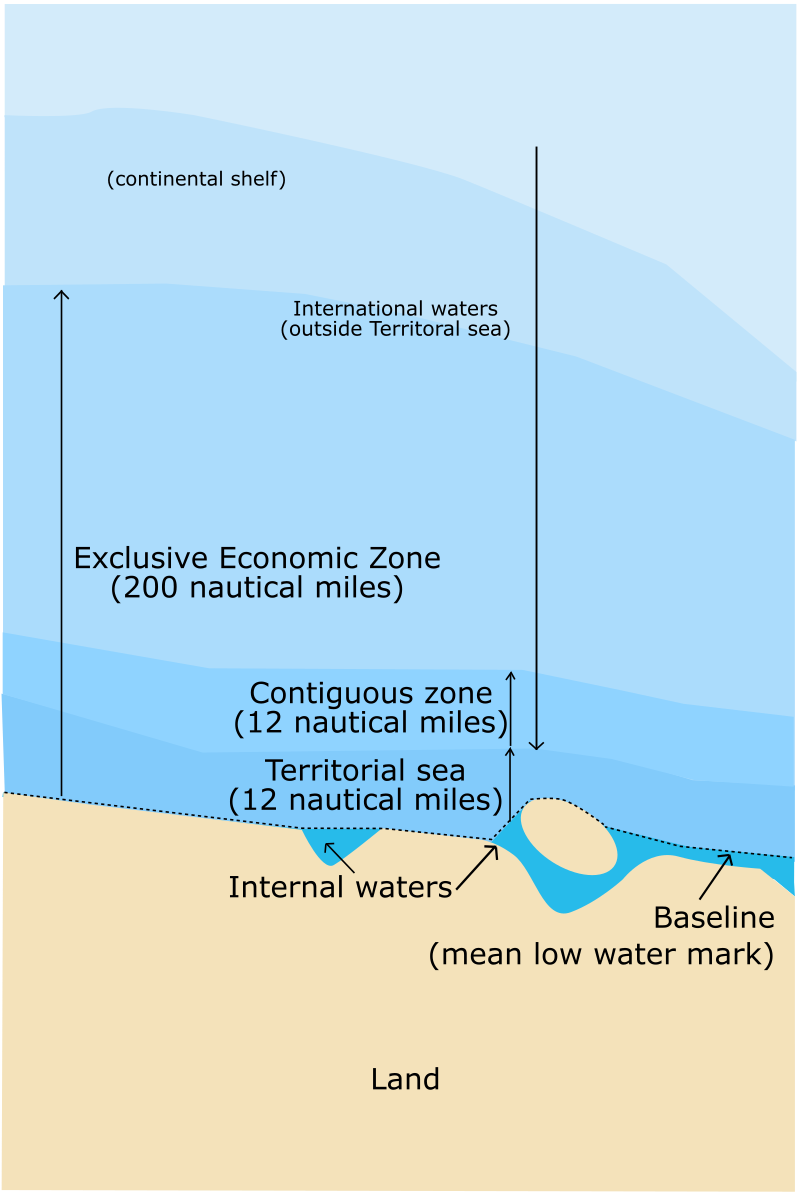
According to the United Nations Convention for the Law of the Sea (UNCLOS) Coastal sovereign Zone of a country.
It may be mentioned that the Bay of Bengal is the largest bay among the 648 bays, and about 1.4 billion people live along the coastline of the Bay of Bengal of Bangladesh, India, Myanmar, Sri Lanka, and Thailand.
Besides, about 40 percent of Bangladeshi peoples live in coastal areas, and about 30 million people’s livelihood depends on (fisheries, coastal agriculture, shipping, and tourism).
According to a World Bank study, 2018, it shows the sea contributes to the Bangladesh economy of 1.2 billion takas (BDT) yearly, which is 3.03 percent of the total GDP. Among those, tourism and recreation contribute 25%, marine fisheries and aquaculture 22%, transportation 22%, offshore oil/gas 19%, shipbuilding, shipwreck 9%, and minerals 3%.

In that report, it shows that about 13 lakhs are involved in fisheries and aquaculture as full, and part-time employment and 60 lakhs are involved with the salt production and shipyard industries.
The newly conquered sea boundary by the judgment of the International court opened a new door of expectation for Bangladesh of a potential reserve of oil and gas. Shipbuilding and shipbreaking industries are expected to grow in the coming days, and the tourism sector is expected to grow at a rate of 9.00 percent every year in the next decade.
There is a tremendous potentiality for cultivating marine algae and oysters, marine pearls, seaweed, and sea urchins.
However, everything has to be done through sustainable management – that the sea resources do not extract suddenly or its reservoir will not disappear, and the sea environment does not pollute.
“There are great opportunities to meet the challenges related to poverty, food insecurity, energy crisis, and ecological imbalance, and create huge employment opportunity accelerate the sustainable development process of the respective countries from this region through Blue Economy approach by making the best use of the unused or untapped sea resources,”
said Sheikh Hasina, the Honorable Prime Minister of Bangladesh, at her inaugural address in Dhaka Conference on IORA’s on sustainable blue economy development held in Dhaka on September 3, 2019. She then added,” But they should ensure a sustainable management approach of the sea resources so that the resources reservoir may not washout or pollute”.
To protect the sea resources and sustainable use sea resources Bangladesh formulates and adopted several Acts and Rules, some of them are given below:
(1) East Bengal Protection and Conservation of Fish Act, 1950
(2) The Territorial Waters and Maritime Zones Act, 1974
(3) THE MARINE FISHERIES ORDINANCE, 1983.
(4) The Marine Fisheries Rules, 1983.
(5) THE PRIVATE FISHERIES PROTECTION ACT, 1889
(6) National Fisheries Policy, 1998
(7) The Protection and Conservation of Fish (Amendment) Act, 1995
(8) The Protection and Conservation of Fish (Amendment) Act, 2002
(9) The Bangladesh Biodiversity Act 2017
But this lack of educated knowledge and seriousness these Acts and Rules are not being implemented properly.
Bangladesh is a Cyclone prone area. It’s experienced several catastrophic cyclones;91 Cyclone is one of them. The most recent Cyclone Aila, Sidr, and Amphion are the medium devastating in terms of human death, but its economic losses are a lot.
Bangladesh’s coastal area is not uniform in shape, and there are a lot of sea islands in the shape of Bangla Alphabet” ব” – are called Ba-Dip (ব-দ্বীপ) or Delta.
Due to climate change, effects global warming resigning sea level continuously. By this time, a large area of the seashore of eastern Asia, Australia, New Zealand, and the Solomon Islands are gone down under the Seawater.
The Climate experts say if the climate change phenomena continue, one-third area of Bangladesh will undergo by the 21st century and thereby displace as many as 10–30 million people of Bangladesh from its Coastal Area. Hence, the people in the coastal area not safe against a rising sea-level and devasting Cyclone.
By constructing and maintaining the Coastal Embankment projects and implementing the afforestation on the coast under the Green bel by Bangladesh Water Develop Board (BWDB) under MoWER, Bangladesh and the Bangladesh Forest department respectively, significant positive impacts are being achieved since 1962.
The Coastal Embankment project and the Green Belt project jointly established a safeguard to the coastal people in most of the coastal areas by protecting their homesteads, agriculture, communications, growth centers, etc.
from the intrusion of the saltwater during the sea tides, tidal surges, Cyclones, etc. To accelerate these achievements and secure more the coastal lives as well as ensure the development of Blue Economy, there should include more emphasis and investment need to strengthen and development of these two projects.




To achieve the highest and continuous economic achievement through sustainable management of the blue economy, it’s absolutely necessary to establish a strategy for integrating the schemes, training, challenge, and use of sustainable technologies on addressing it.
Blue Economy (নীল অর্থনীতি) – Bangladesh Challenges:
- Yet to take appropriate steps; Lacks framework for sustainable use of resources;
- Absence of required research;
- Lacks adequate knowledge, shortage of skilled manpower, equipment, and research in the deep sea.
- Yet to pay proper attention to government policy and regulations.
Ways to overcome the objections:
- It is essential to create a healthy, transformative, and profitable marine environment.
- Organize an authority for maritime development.
- Developing sustainable technology and research Centre.
- Establish a focal point for business, investment, and financing.
- Progressing maritime guard and to protect maritime boundaries increasing applying force. (In the meantime, the Government of Bangladesh already created the Coast Guard regarding this and strengthen the Bangladesh Navy is being bit by bit increased).
- Education, training, and capacity building.
- Establishing adequate infrastructure.
- Give appreciation on government policy and investment, promotion of investors and financiers, provision of security, etc.
- Strengthen and improvement of the Coastal Embankment and enhance the afforestation along the Bangladesh coastline.
In Bangladesh, this concept can develop in emerging sectors such as shipping and port facilities, seaborne trade, fisheries, coastal tourism, aquaculture, marine biotechnology, seabed mining, renewable energy (wind, wave, tidal), etc.
To enhance the GDP growth rate along with tackling of energy shortages, establishing an earning source by extending and strengthen the line of export-import facilities to the north-east Indian states along with Nepal and Bhutan,
converting the sea recourse into countries economic resources through economic diversification and creating enormous jobs for the vast population- all these matters are necessary to focus on the proper use of blue resources.

References:
- Wikipedia
- https://www.iora.int/en/priorities-focus-areas/blue-economy
- International Tribunal of the Law of the Sea https://www.itlos.org/cases/list-of-cases/case-no-16/
- Toward a Blue Economy: A Pathway for Sustainable Growth in Bangladesh (English) – World Bank Study Report, November 2018 ( https://www.worldbank.org/Strategic Analysis: Bangladesh–Myanmar ITLOS Verdict: Precedence for India? By Riddhi Shah,
- The Daily Pothom Alo, September 05, 2019
- (Pics Reference গুলো দিতে পারেন)
- Can the strategy be a roadmap for Bangladesh’s economic journey? This is the first part of a two-part op-ed – Dhaka Tribune.
- Green Page Bangla Version
